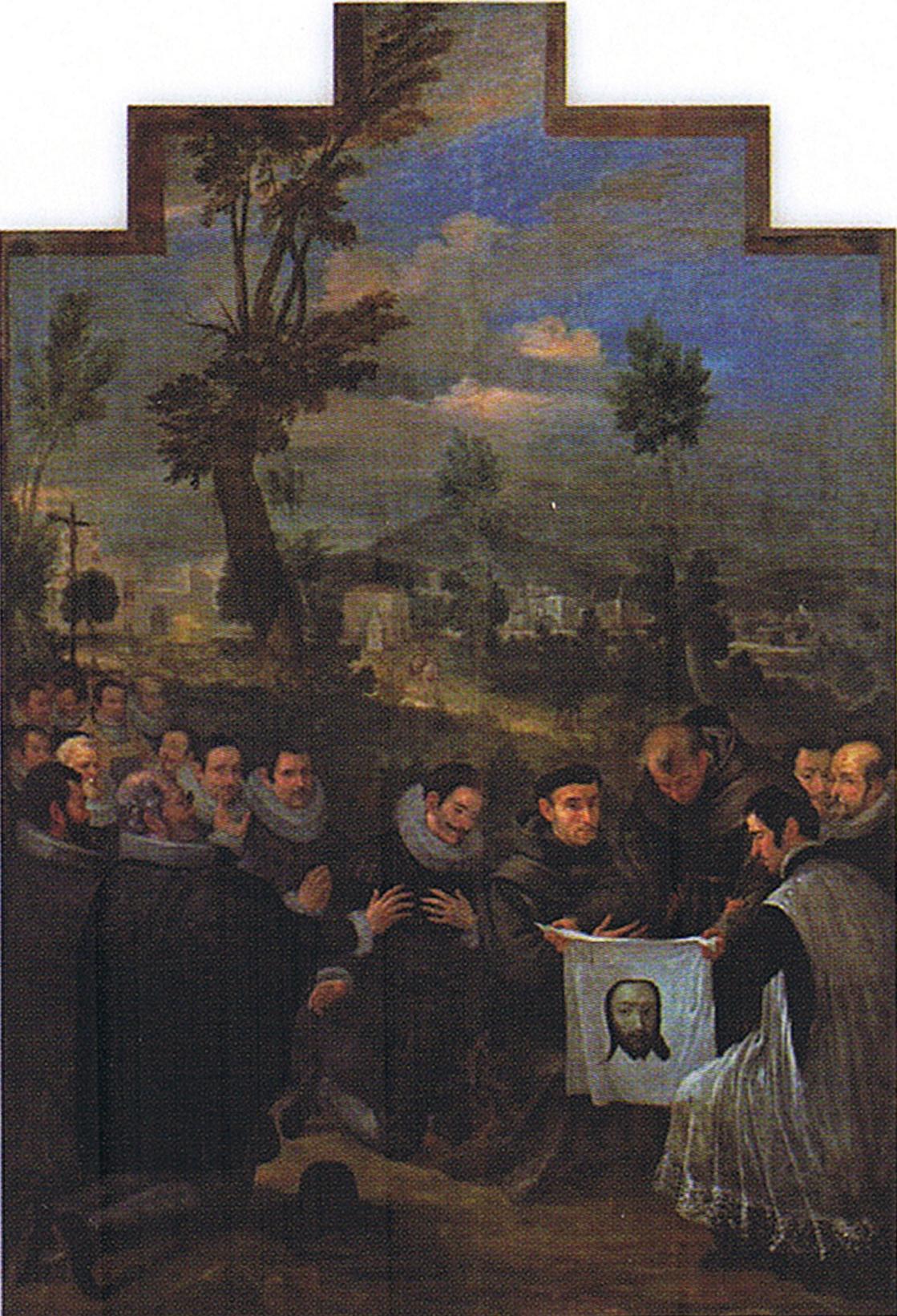Juan Conchillos Falco on:
[Wikipedia]
[Google]
[Amazon]
 Juan Conchillos Falco (1641 – 14 May 1711) was a Spanish painter in the
Juan Conchillos Falco (1641 – 14 May 1711) was a Spanish painter in the
Works by Juan Conchillos
@ the Biblioteca Nacional de España
Works by Conchillos
@ the Museo del Prado
Scholarly articles
in English about Juan Conchillos both in web an
PDF
@ th
Spanish Old Masters Gallery
{{DEFAULTSORT:Conchillos, Juan 17th-century Spanish painters Spanish male painters 18th-century Spanish painters 18th-century Spanish male artists 1641 births 1711 deaths
Baroque
The Baroque (, ; ) is a style of architecture, music, dance, painting, sculpture, poetry, and other arts that flourished in Europe from the early 17th century until the 1750s. In the territories of the Spanish and Portuguese empires including t ...
style.
Biography
He was born in Valencia. He came from an illustrious family and spent many years studying in the workshop ofEsteban March
Esteban March (c,1610, Valencia - c.1668, Valencia) was a Spanish Baroque painter. Most of what is known about his life comes from writings by Antonio Palomino, who lived slightly later than March.
Life and work
His works may be compared, styl ...
, who was apparently rather eccentric. Antonio Palomino, ''El museo pictórico y escala óptica III, El Parnaso español pintoresco laureado''. Madrid: Aguilar. In 1670, he moved to Madrid, where he was reunited with José García Hidalgo
José García Hidalgo (1645 or 1646 – 1717 or 1719) was a Spanish painter, who wrote notes of his life, but omitted to state where and when he was born. Later research showed that he was born in Villena in 1646. He was named by the artists of ...
, a former fellow student, who helped him find work; most of which is now lost. While there, he pursued additional studies and copied the Old Masters
In art history, "Old Master" (or "old master")Old Masters De ...
at the museums. When he returned to Valencia, he introduced what he had learned into the Valencian art milieu.Pérez Sánchez, Alfonso E. (1992). ''Pintura barroca en España 1600-1750''. Madrid : Ediciones Cátedra S.A.
He painted several scenes from the life of "The Christ of Beirut" for the Church of the Savior, which were destroyed during the Spanish Civil War. An image of St. Bartholomew
Bartholomew (Aramaic: ; grc, Βαρθολομαῖος, translit=Bartholomaîos; la, Bartholomaeus; arm, Բարթողիմէոս; cop, ⲃⲁⲣⲑⲟⲗⲟⲙⲉⲟⲥ; he, בר-תולמי, translit=bar-Tôlmay; ar, بَرثُولَماو� ...
is preserved in Murcia, at a church dedicated to that saint. In Alicante
Alicante ( ca-valencia, Alacant) is a city and municipality in the Valencian Community, Spain. It is the capital of the province of Alicante and a historic Mediterranean port. The population of the city was 337,482 , the second-largest in th ...
, he produced icons and scenes related to the Holy Face of Jesus for the . A few works are in private collections.
He is perhaps best known for his drawings; maintaining a private school at his home that emphasized the use of charcoal. he is said to have made one charcoal drawing every night, although he also worked in gouache. A large number of his drawings, meticulously dated, are in the collections of the Museo del Prado
The Prado Museum ( ; ), officially known as Museo Nacional del Prado, is the main Spanish national art museum, located in central Madrid. It is widely considered to house one of the world's finest collections of European art, dating from the ...
and the Biblioteca Nacional de España, among others. Some of his better known students include Vicente Bru, Evaristo Muñoz
Evaristo Muñoz Estarlich (1684, Valencia – 1737, Valencia) was a Spanish Baroque painter; a follower of the decorative style introduced to Valencia by Antonio Palomino. Some sources give his year of birth as 1671.
Biography
He studied with ...
and his own son, Manuel Antonio.
An attack of palsy left him permanently crippled and he was forced to retire. Not long after, he became totally blind. He died in Valencia in 1711.
References
*External links
Works by Juan Conchillos
@ the Biblioteca Nacional de España
Works by Conchillos
@ the Museo del Prado
Scholarly articles
in English about Juan Conchillos both in web an
@ th
Spanish Old Masters Gallery
{{DEFAULTSORT:Conchillos, Juan 17th-century Spanish painters Spanish male painters 18th-century Spanish painters 18th-century Spanish male artists 1641 births 1711 deaths